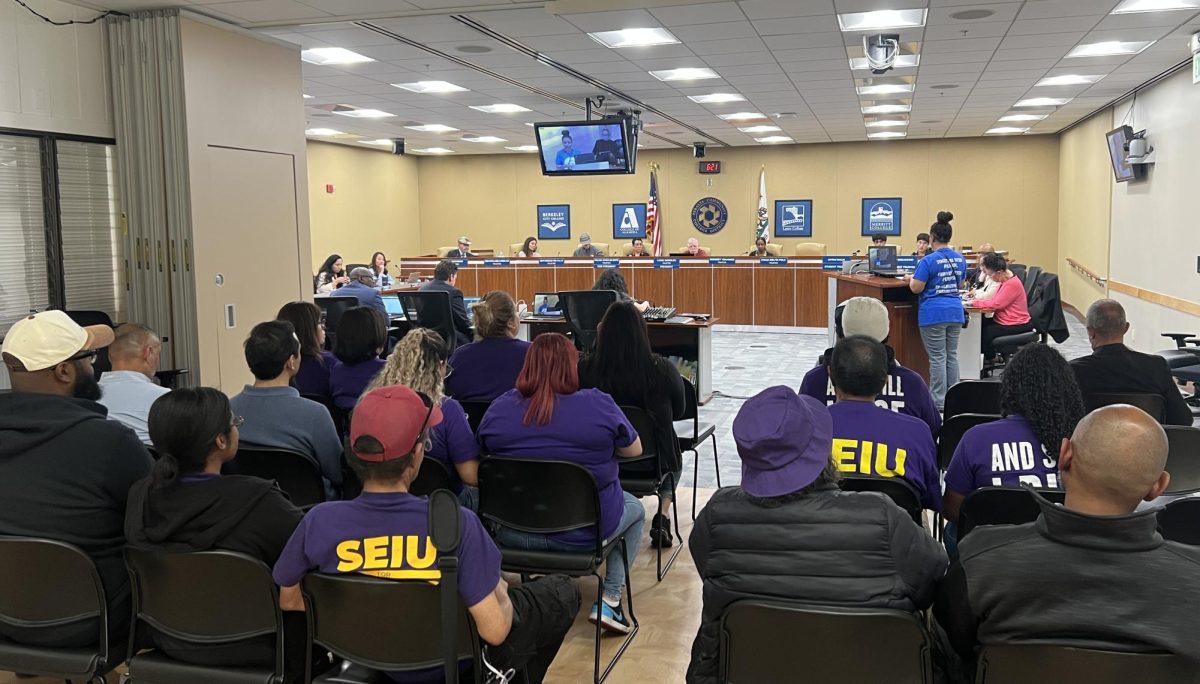

by Jordan Hankston
Students are being assigned substitute teachers and moved to auditoriums and libraries during school hours while their teachers are on strike in the Oakland Unified School District (OUSD).
Around 3,000 educators walked off the job Feb. 21 to advocate for lower student-to-teacher ratios, wage increases for teachers and support staff, and additional support staff such as therapists and nurses for students.
The largest event brought thousands of supporters together on Feb. 21 to rally at Frank Ogawa Plaza in downtown Oakland. Many smaller activities also took place at schools throughout the district.
One such action occurred at Skyline High, where organizers such as Elan Axelbank with Socialist Alternative highlighted the fact that there is a ratio of over 1,300 students for each school nurse. This arrangement is inadequate to meet the needs of students, Axelbank said.

Another goal is to end “poverty pay” for teachers, which occurs when educators cannot afford to live in the areas where they teach.
“Two of the unions are calling for a 12 percent raise for all teachers and workers,” Axelbank said.
A financial audit conducted by OUSD found that the district could have a budget deficit of $30 million or more by 2021. In response, the district is planning to close a number of public schools throughout Oakland.
“The district is threatening to close 26 to 27 schools across Oakland,” Axelbank said. “They want a lot of them to be replaced by charter schools, thus privatizing our public education. So we are out here to defend high quality public education.”
Additionally, teachers have become frustrated with increased class sizes over the years.

Anna Gomberg, a chemistry teacher and co-director of Skyline High School’s Green Energy Pathway, said she has less time to provide quality feedback to every student that deserves it.
“If you have large class sizes, it’s really hard to give students the individual attention they need,” she said. “In Oakland, we have the highest percentage of special ed students in the state, so we have students with significant support needs.”
Gomberg learned from experience that the care given to a student drops when class sizes are high.
“I’ve had an AP class with 35 students in it, and the quality of education isn’t going to be as good as it could be,”she said. More students also means a larger need for supplies, said Rachel Kantor, illustration and animation teacher at Skyline.
“My largest class size is 34 students and material resources are really expensive to begin with. So having them be shared between 34 students is just spreading the resources that were already limited even further,” she said.

According to the California Department of Education, the average salary for an OUSD teacher was $63,149 from 2017–2018. Instructors are finding this to be insufficient to live in the Bay Area, where the cost of living is one of the highest in the country.
James Barbuto, director of the education and health pathway at Skyline, said this high cost of living is having a negative effect on the quality and consistency of educators within the OUSD.
“I see teachers come and go constantly,” he said, “including teachers who would love to have a career here, but just can’t afford to live in the Bay Area.”
There doesn’t appear to be an end in sight to these strikes. According to a Feb 21. NBC article, OUSD officials claim that they do not have the funds to meet union demands.


























